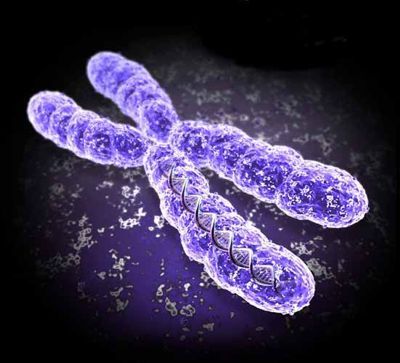Medical expert of the article
New publications
Migraine is caused by a mutation in the X chromosome.
Last reviewed: 01.07.2025

All iLive content is medically reviewed or fact checked to ensure as much factual accuracy as possible.
We have strict sourcing guidelines and only link to reputable media sites, academic research institutions and, whenever possible, medically peer reviewed studies. Note that the numbers in parentheses ([1], [2], etc.) are clickable links to these studies.
If you feel that any of our content is inaccurate, out-of-date, or otherwise questionable, please select it and press Ctrl + Enter.
A region of the genome has been found, mutations in which are one of the causes of migraines: this region is located on the X chromosome and includes a gene that controls the level of iron in brain cells.
Migraines affect 12% of people, and women are three times more likely than men to suffer from them. And don't think that women's complaints about feeling unwell are some kind of tricks or the result of the fair sex's increased suspiciousness: women have quite objective reasons to complain about headaches more often. Researchers from Griffith University (Australia) have found out that migraines depend on genes on the X chromosome, meaning that our ladies really do have a higher risk of getting this poorly understood disease.

Scientists were looking for migraine genes in Norfolk residents. The remnants of the mutineers from the legendary ship Bounty once crossed over to this island. Almost two centuries of geographic isolation and the specific history of Norfolk, which was a prison island for a long time, led to the formation of an extremely homogeneous population from a genetic point of view. If some genetic deviation appears here, it is reproduced many times in subsequent generations. Scientists studying human genetics have long used Norfolk to collect data. This is probably the only case when a mutiny on a ship had such favorable consequences for science...
In fact, the main result of the Australian scientists' research was not that they found a region on the X chromosome, mutations in which cause migraine. It turned out that there is a gene here that controls the level of iron in brain cells. The connection between iron in the brain and migraine was discovered for the first time, and now scientists have to understand how one affects the other. However, one should not think that this genetic anomaly is the only cause of migraines. Here we are most likely dealing with a complex interweaving of genetic and non-genetic factors, and in the case of genetic factors, it is unlikely that the matter is limited to one gene. At the same time, the results obtained will help to create both more adequate methods of diagnosing migraine and optimal methods of treating it.
There remains, however, a significant question: why hasn't this mutation been washed out of the genome? A genetic change usually persists through generations if it brings some benefit to its owner. But what benefit can migraine provide? The authors of the work suggest that migraine can be accompanied by increased sensitivity of neurons to various changes in the environment. Indeed, some people begin having migraine attacks, for example, with a drop in atmospheric pressure, and then it turns out that it is just a side effect of the "internal barometer" that allows you to hide from bad weather in time. This is certainly an evolutionary plus, but such an assumption still requires verification: it sounds too fantastic.

